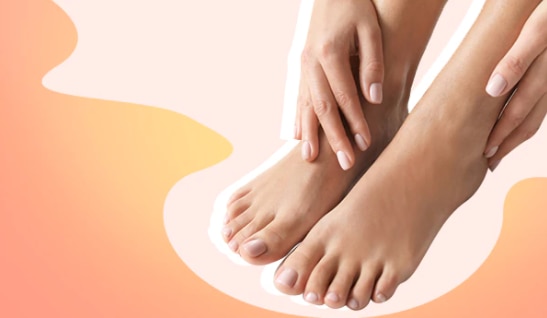Specialist Dermatology Solutions for Treatment of Hyperhydrosis of Hands: Comprehensive Guide
Specialist Dermatology Solutions for Treatment of Hyperhydrosis of Hands: Comprehensive Guide
Blog Article
Unveiling the Complexities of Excessive Sweating: A Comprehensive Overview to Medical Diagnosis and Administration
Too much sweating, clinically recognized as hyperhidrosis, is a problem that impacts a substantial number of individuals and can have a profound impact on their high quality of life. While sweating is a natural physical feature, its overactivity in hyperhidrosis presents an unique set of challenges that commonly go past simple discomfort.

Comprehending Hyperhidrosis Causes
Hyperhidrosis triggers can be associated to different factors such as genes, hormonal discrepancies, and certain medical problems. Genes play a substantial role in key focal hyperhidrosis, where individuals inherit the problem from their family participants. By determining the details factors contributing to extreme sweating, medical care companies can customize therapy strategies to attend to the underlying cause, providing relief and boosting the quality of life for people influenced by hyperhidrosis.
Acknowledging Hyperhidrosis Manifestations

Furthermore, hyperhidrosis signs and symptoms might materialize in emotional and social distress, as people might feel embarrassed or nervous about their sweating, resulting in evasion of social situations (Treatment for hyperhydrosis of hands). Additionally, duplicated episodes of too much sweating can result in skin maceration, fungal infections, and an overall decline in self-worth
Diagnostic Process for Hyperhidrosis
Starting the diagnostic process for excessive sweating includes comprehensive evaluation of the individual's medical background and health examination. Asking about the start, duration, and triggers of sweating episodes is essential to set apart in between primary focal hyperhidrosis and additional generalized hyperhidrosis. Case history should likewise include concerns concerning medications, medical problems, and household history of hyperhidrosis.
During the checkup, particular interest is paid to the areas influenced by sweating. The doctor may analyze the level of sweating, look for indicators of underlying problems, and examine the influence of sweating on the individual's lifestyle. In addition, particular tests like the gravimetric test, starch-iodine examination, or skin conductance dimensions may be conducted to quantify the amount of sweat generated.
In addition, in instances where additional hyperhidrosis is thought, added examinations such as blood tests, pee examinations, and imaging studies might be suggested to recognize the underlying reason for too much sweating. The diagnostic procedure aims to precisely determine the type and root cause of hyperhidrosis to lead appropriate administration methods.
Therapy Choices for Hyperhidrosis
When dealing with excessive sweating, various treatment choices are offered to minimize symptoms and enhance the individual's lifestyle. The treatment technique for hyperhidrosis relies on the intensity of signs and the patient's action to first therapies.
Topical therapies, such as aluminum-based antiperspirants, are commonly recommended as the initial line of defense for handling mild cases of hyperhidrosis. These items work by plugging the sweat ducts, thus lowering the amount of sweat that gets to the skin's surface area. For people with more serious signs and symptoms, oral drugs like anticholinergics might be prescribed to assist reduce sweating. These medications can have side results and are not appropriate for everyone.

Effective Monitoring Strategies
To efficiently take care of hyperhidrosis, a individualized and detailed therapy strategy tailored to the individual's details requirements and action to previous therapies is important. This strategy may include Learn More a combination of therapeutic approaches, consisting of way of life modifications, topical treatments, oral medications, botulinum toxic substance shots, iontophoresis, and in extreme instances, surgical treatments like sweat gland elimination or sympathectomy. Lifestyle modifications such as wearing moisture-wicking clothes, utilizing antiperspirants, and exercising stress-reducing techniques can enhance clinical treatments. Topical antiperspirants containing light weight aluminum chloride are commonly the first-line therapy, with stronger solutions offered for resistant situations. Dental medicines like anticholinergics may be prescribed for generalized hyperhidrosis. Botulinum toxin injections work for focal hyperhidrosis, giving short-lived alleviation by blocking the launch of acetylcholine. Iontophoresis, entailing making use of a low electric current to decrease sweat gland task, can be beneficial for both palmoplantar and axillary hyperhidrosis. Surgical alternatives are usually scheduled for severe, refractory situations and require careful consideration of threats and benefits. A multidisciplinary strategy entailing skin More about the author doctors, health care medical professionals, and, if essential, specialists, can enhance the monitoring of hyperhidrosis.
Verdict
Finally, hyperhidrosis is a problem characterized by too much sweating, which can significantly impact an individual's lifestyle. By comprehending the causes, acknowledging the signs and symptoms, and undertaking the diagnostic procedure, doctor can effectively handle this condition. Treatment alternatives consist of topical medications, dental drugs, injections, and also surgical treatments in severe situations. With correct medical diagnosis and management approaches, people suffering from hyperhidrosis can find alleviation and enhance their general well-being.
Extreme sweating, clinically recognized as hyperhidrosis, is a problem that affects a substantial number of individuals and can have an extensive influence on their quality of life. By identifying the certain elements contributing to extreme sweating, healthcare providers can tailor therapy strategies advice to address the underlying reason, providing alleviation and enhancing the quality of life for individuals affected by hyperhidrosis.
Hyperhidrosis, defined by too much sweating past what is required for managing body temperature level, can significantly influence a person's high quality of life. Inquiring regarding the start, period, and activates of sweating episodes is important to separate between main focal hyperhidrosis and secondary generalized hyperhidrosis. Exessive Sweating.In verdict, hyperhidrosis is a condition defined by too much sweating, which can greatly affect an individual's top quality of life
Report this page